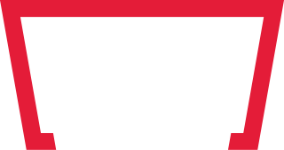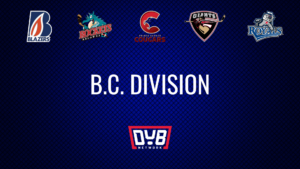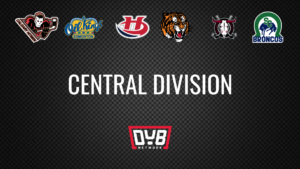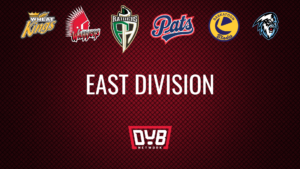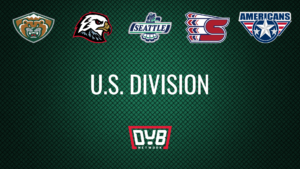DUBNetwork works to conduct interviews with different people who are directly involved (or have been involved) in the Western Hockey League in some capacity. This includes players, prospects, alumni, team personnel and staff, radio personnel, trainers etc. We then proceed to post the transcript of the interview for our fans to read and enjoy, in an attempt to get to know these people a little better.
This week I have interviewed Paul Thompson, who is the Head Strength and Conditioning Coach/Personal Trainer at Outperforme Athletics (www.outperforme.com) in Brandon, MB. This facility is the home of many Bantam/Midget/Junior/Professional hockey players, both in the off season and during the hockey season. The facility is owned by renowned Physiotherapist and Personal Trainer, Bobbi Schram and WHL/NHL alumni, teacher and personal trainer, Jonathan Filewich. Paul has past experience playing hockey at the Midget AAA and Junior level, but more recently completed a baseball scholarship at Minot State University as a pitcher. Paul’s focus these days is away from the mound and in the gym, where he works with future and current WHL players in helping them to achieve their goals of making it to the next level, as well as current professional hockey players who return to the Westman area in the offseason. Paul was kind enough to sit down and answer some questions for us recently. Enjoy!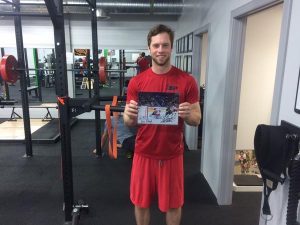
Paul, can you give our readers an idea of what a regular day looks like for you at Outperforme. How do the winter months differ from the summer months, when larger contingents of hockey players are back in Western Manitoba for their off season?
As far as hockey players are concerned, there is a big difference between the winter and summer months. During the winter, our athletes are in the middle of their seasons, which presents a couple challenges. Most of the time we are finding a way to balance practices and games with time in the gym. Typically during the season athletes are working to maintain the strength and power gains they made during the summer months. Because of the hectic schedules, the athletes are often limited to 1-2 workouts a week to ensure they have optimal rest time. Generally I will meet with the athletes between 2-4 times per month (once a week, bi weekly, etc) to make sure they are doing their workouts properly, as well as tweaking and changing their programs as their goals change or they come down with an injury. Because most of our athletes in the winter have school, usually an hour or two before school starts, and then evening hours are my busy times.
Summers are a whole different ball game because everyone is in their off seasons. We have athletes that I will meet with up to four times a week. At Outperforme we offer strength programs, speed and agility training, plyometrics, strength and mobility based yoga, among other things. Because every athlete is different, a lot of my time is spent making individualized programs for them based on what their individual and their team goals are. Between training clients, and customizing the programs, summers are fairly hectic, with a lot of extra training hours and program design.
Who are some of the notable hockey players that you and the Outperforme staff train during the off season, in terms of current WHL players and WHL alumni/NHL players?
We have been lucky to train a few athletes that have played at a fairly high level. Among some of the athletes are current NHL players Matt Calvert (CBJ) , Joel Edmundson (STL), and Ryan White (MIN). As far as current players, we have worked with Tanner Kaspick, Connor Gutenberg, James Shearer, Zach Wytinck (BWK). Jordy Stallard (PA), Koby Morrisseau (SPO), and Sam Huston (KTN). As far as former WHL players go, Outperforme has worked with the NHL players listed above, Tyler and Alex Plante, Mike Hellyer, Shayne Wiebe, Brett Kitt, Landon Peel, and Landon Cross among many others!
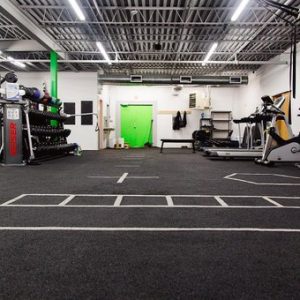 As the WHL Bantam draft approaches quickly, I know that fans are eager to find out more about the next crop of future WHL talent. Are you currently working with any bantam aged kids who have impressed you with their development, both on the ice and in the gym?
As the WHL Bantam draft approaches quickly, I know that fans are eager to find out more about the next crop of future WHL talent. Are you currently working with any bantam aged kids who have impressed you with their development, both on the ice and in the gym?
Fortunately we get a great first hand look at lots of perspective bantam players. A couple names that come to mind are Brandon natives Daemon Hunt and Calder Anderson. I don’t get to see as much of them as I like on the ice with my evening work schedule, but as far as in the gym is concerned their work ethic has really impressed me. The level of focus and maturity these kids have in the gym for their age is extremely impressive. They never miss a work out, and they come for a reason, never just going through the motions. Its great to see it translating onto the ice for them, its tough to believe they are only 14 years old. I am based solely out of Brandon, but we work with a lot of the Southwest Cougars as well, who have a couple really promising players that I’ve seen play, and have trained with us for a couple of years.
For a WHL player who is competing at such a high level of hockey, how much emphasis in the off season is put towards time in the weight room VS time spent training on the ice? Is it different for each player or is there a certain ratio that a personal trainer would like to follow?
Every athlete is different, but generally all of our WHL athletes are working out with us between 4-6 times per week, between weight room and speed and agility sessions. On top of that, a lot of the athletes are also on the ice doing skill/power skating as well. This is all fine and well as long as they are getting optimal rest time in between to avoid over training and injuries. A lot of our athletes have specific goals based on their bodies, style of play, etc, and all of the summer programs are designed accordingly. This could be a little more focus on weight gain/loss, more speed agility work, etc. It really just depends what the athlete needs. There is no certain ratio, it depends on how each athlete responds.
When a junior player comes back for the off season, how much of their workout/meal plan comes from input from their junior club as opposed to just from yourself and the player?
Before any workout or meal plan is designed, we have an assessment with each athlete. There, we talk to them about their individual goals, as well as what their teams have assigned them for the summer. A lot of the time they are on the same page. During the assessment we take a look at how the athletes body is moving, where they might be strong/weak, and injuries they might be recovering from, etc and if we see something that might be an area of concern, then that’s something that we recommend putting some extra work into. Usually an off season lasts between 3-4 months, so as efficiently as possible we try to deal with imbalances and weak points in addition to working on individual and team goals. Generally there is plenty of time to accomplish everything and make sure come puck drop they are in the best possible condition to compete.
Are the workout routines always 1 on 1, or is their group activities that you do where a Bantam or Midget aged kid gets the opportunity to put in work with a WHL veteran like Jordy Stallard or an NHL veteran like Ryan White?
That depends. Some of the athletes prefer 1-1 training, and others find they have more success if they workout in small groups. Our summer track programs are all in groups, but these groups are made depending on the athletes age, training level, etc to make sure that the athletes get the best workout they possibly can. We make recommendations based on what we see in the gym, and we communicate very closely with the athletes and their families to make sure they are getting the best results. Our older athletes are great. They are all extremely hard working and disciplined. Although they don’t workout directly with our younger athletes, they provide a great example of the body of work it takes to be successful in hockey. There is no doubt that they got to the level they are at by being the hardest working guys in the group, and that rubs off on our younger athletes.
When yourself and the Outperforme staff have a client who is preparing for the NHL combine, do you prepare them vigorously for each event at the combine or do you mainly focus on their strengths? From your experience, how long before the combine would a player start to get ready for the different challenges the combine presents?
We have been lucky to have a couple clients that were preparing for the combine. Building that program was a lot of fun. We spent a lot of time practicing all the individual events, not necessarily on only the events he was strong at. The goal was to do as well as possible on each event, and turn any weakness’s into potential strengths. The combine tests across the board for strength, agility, endurance, explosiveness, flexibility, etc so it is a lot to cover, but we built that into his program as much as possible. A lot of the time there was a full workout, as well as some individual combine event training in addition. There was a lot of hard work and research involved!
As far as how much time to prepare, we are limited in prep time. It depends a lot on how long of an off season the athlete has, which includes playoff runs, recovery time after the season, as well as any potential injuries the athlete might be recovering from. Prep time for the combine can range anywhere to 1-3 months, depending on the circumstances.
I think for some people there is a common misconception that a major junior or professional hockey personal trainer is strictly there to get that particular player as big as they can by pushing as much weight as they can. What are some other areas of focus that you look at or try to improve for a hockey player and what may some of those workouts consist of?
Every new/returning athlete that comes to Outperforme goes through an extensive assessment. During this, we look at as much as possible, and get as much information from the athlete as possible before we do any program design. Everything goes into consideration. Strengths/weakness’s are important, but we put a lot of emphasis on posture, mobility, body types, etc. You can tell a lot about a person by the way they stand, whether they stand with their toes externally rotated, shoulders hunched forwards, or the curvature in the lower back. Usually this means there is a deficiency that needs to be addressed, or certain muscles aren’t being recruited properly. This can lead to the athlete getting injured, and an injured athlete can’t train or more importantly play their sport. Don’t get me wrong, I’ll be the first person to say that being strong as an athlete is extremely important, but there are many other factors to consider as well. An athlete can squat 600 pounds, but if they cant get low enough to the ice to properly stride, it will compromise their skating ability. An athlete might be able to perform 100 sit ups, but their core might not function laterally enough to handle the various torques and rotations that occur during a hockey game. I’m very fortunate to work close with Bobbi Schram who understands and has more experience working with this than anybody I know.
Our workouts are periodized over the summer months. Starting with an adaptation that we generally try to correct as many of these deficiencies as we can, before moving on to our strength and hypertrophy phases, before finishing off with power to ensure the athletes are strong and explosive for their respective seasons as well as anything else they might need some extra work on. These exercises/programs might focus on mobility, or activating certain muscle groups to make sure everything is working properly. We try to look at the way an athletes body will be moving on the ice, and plan accordingly.
It must be rewarding for you and your colleagues to be able to watch your clients compete at such a high level during the hockey season; whether it’s in bantam, midget, junior or the pro ranks. What are some of your other favorite things about this line of work?
No doubt it’s seeing the results on the ice. An athlete can increase their bench by 20 pounds, vertical jump by 3 inches, or accomplish everything else in the gym, but that doesn’t mean anything if it doesn’t translate to an actual game. Seeing the improvements in the players on the ice and seeing them have success is a great feeling, but knowing that the athletes hard work is paying off for them is even better. There are a lot of great things about my job, but being able to help our athletes out and accomplish their goals is the best part.
Due to the fact that you work closely with WHL players and are a WHL fan yourself, I want to ask you a few things about the current state of the league. Are there any new rules that have been implemented the past handful of years that you agree or do not agree with? If you had to pick something, what would you change about the game today to make it better?
Personally I think the league should change the draft age to first year midget aged players.It’s a lot of pressure to put on a young players, and I find it incredibly difficult to predict how a player is going to handle older, stronger competition 2-3 years from now.
I do really like that players can kick the puck in now though!
Thank you for answering those questions Paul, Next I am going to ask you some rapid fire questions, ready?
Who is the most exciting WHL player to watch this season?
Being from Brandon I get to see a lot of the eastern teams, and for me its David Quenneville. Although a bit on the small side, the way he skates and handles the puck from the back end is a lot of fun to watch.
Who is the most improved WHL player that you have seen, from last year to this year?
Connor Gutenberg comes to mind, but I’ll go with Strathclair Manitoba’s Morgan Geekie with Tri City. I don’t see him play often but I think he’s increased his point total by like 70 this year? Unreal what a difference a year can make. He also took me deep in a senior baseball game a couple summers ago when he was 16.
Who are three WHL alumni that you currently enjoy watching the most in the NHL?
Aside from the Outperfome athletes, I’d say Jared Spurgeon, Kyle Brodziak, (big Minnesota fan) and Tyson Barrie.
Favorite uniform(s) in the WHL?
The throwback Wheat Kings, or Everett.
Who is a WHL player to watch out for next season?
Manitoba kid, Jett Woo. Defenseman for Moose Jaw. Only 16 years old and plays like he’s 30.
Predictions for the upcoming WHL playoffs; who meets in the eastern conference finals and who meets in the western conference finals?
Regina/Lethbridge in the east, and Everett/Seattle in the west.
Favorite hobbies?
I spend a lot of time with sports. Baseball in the summer and hockey in the winter, but in my down time I log a lot of hours on the play station or reading.
Thanks for your time Paul, I appreciate it!
